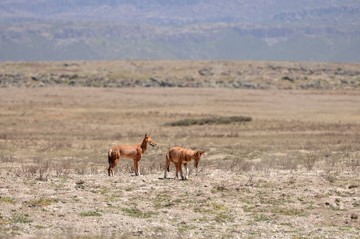

By Eric Bedin
When I started working in Bale in January 2014, Ethiopian wolf numbers were at their peak in three sub-populations monitored by EWCP for more than 20 years. Everybody was happy. I also remember, however, alarm bells ringing, with the certainty that wolves at high density are more vulnerable to disease infection - a pattern observed over and over.
Sadly, our nightmare became true: at the end of the summer rabies spread rapidly among the wolves of the Sanetti Plateau and West Morebawa. Rapid intervention to vaccinate 106 wolves, coordinated with the Bale Mountains National Park and the Ethiopian Wildlife Conservation Authority, helped to contain the outbreak. At the time we estimated that the affected populations had declined by a third, and thought that the worst was behind us, as we optimistically observed many packs producing pups and the population growing.
In September 2015, however, the finding of two wolf carcasses in the Web Valley marked the start of the most dramatic outbreaks of CDV recorded in Bale Mountains. The outbreak reached wolves in Web, East Morebawa and Sanetti, halving their numbers. It was with huge sadness that we recorded the death of many wolves which, few months ago, we had vaccinated against rabies.
Towards the end of the outbreak, permission was given to vaccinate a limited numbers of wolves against CDV, as part of an ongoing trial to test the efficacy of the vaccine on Ethiopian wolves. The results were promising. And the field teams report that an important number of pups are still alive, bringing hopes for a brighter future for the wolves of Bale.
Photo: In January a tagged female wolf which we know well, left her natal pack and was observed foraging with this large adult male, probably seeking establish a new territory
